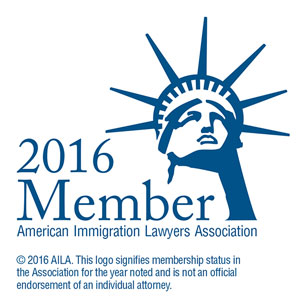RESUME REVIEW IN THE PERM PROCESS
Under the Immigration and Nationality Act, the Department of Labor (DOL) has a statutory responsibility to ensure that no foreign worker (or “alien”) is admitted for permanent residence based upon an offer of employment absent a finding that there are not sufficient U.S. workers who are able, willing, qualified and available for the work to be undertaken and that the admission of such worker will not adversely affect the wages and working conditions of U.S. workers similarly employed. INA § 212(a)(5)(A)(i).The DOL fulfills this responsibility by determining the availability of qualified U.S. workers before approving a permanent labor certification application and by ensuring that U.S. workers are fairly considered for all job opportunities that are the subject of a permanent labor certification application. Accordingly, the DOL relies on employers who file labor certification applications to recruit and consider U.S. workers in good faith.
Attorneys, agents, and foreign workers are prohibited from interviewing and considering U.S. workers during the permanent labor certification process, as described in 20 C.F.R. § 656.10 (b)(2)(i) and (ii). However, the DOL does not prohibit attorneys and agents from performing the analyses necessary to counsel their clients on legal questions that may arise with respect to this process. The employer, and not the attorney or agent, must be the first to review an application for employment, and must determine whether a U.S. applicant’s qualifications meet the minimum requirements for the position, unless the attorney or agent is the representative of the employer who routinely performs this function for positions for which labor certifications are not filed.
The DOL has indicated that good faith recruitment requires that an employer’s process for considering U.S. workers who respond to certification-related recruitment closely resemble the employer’s normal consideration process. Yet, real world recruiting is at times impossible when the DOL sets forth “unreal” recruitment standards for employers! As an attorney who regularly counsels employers filing PERM labor certifications, I have found that one of the most difficult concepts for some employers to grasp is the resume review process and how it ought to be conducted in the PERM process.It’s hard for an employer to comprehend why they have to continue to assess an applicant who upon receipt of an e-mail from the employer, responded that he was “away” and would get back to the employer at some point in the following week; or an applicant who, when contacted, had no recollection that he had even applied for the job and needed to be informed of the job opportunity and the employer’s business; or an applicant who only listed “Software Engineer” as his experience leaving the employer unclear as to what skills he may possess. As reasons for rejection of applicants, employers sometimes state,“applicant is far too overqualified and I would never hire him for this position” or “these applicants went to foreign universities and I know they require sponsorship.” While these reasons may be acceptable in the employer’s normal consideration process, neither is a valid reason for rejection in the PERM process.Some employers become frustrated and push back. I find that I very often have to preface my comments with “We are not operating in the real world here…”
Currently, and for some time now, every PERM audit letter requests verification of the unavailability of US workers. A request for resumes and applications for all US workers who applied for the job opportunity seems to have become the standard. The DOL specifically wants to review documentation of the employer’s contact with applicants and its assessment of the qualification of applicants.Yet, other than the expectation that the employer conduct “good faith” PERM recruitment, the DOL has not issued significant guidance with regard to resume review. But it is possible to glean some information from recent decisions by the Board of Alien Labor Certification Appeals (BALCA). In particular, two specific cases, involving Supervised Recruitment, shed some light on how the DOL expects employers to conduct resume reviews.
In Matter of Goldman Sachs & Co., 2011-PER-01064 (June. 8, 2012), the employer, indicated on the ETA Form 9089 that it would accept for the position of Financial Analyst, “any suitable combination of education, training and experience,” language well-known to practitioners filing PERM applications as the Kellogg language based on Matter of Francis Kellogg, 94-INA-465 (Feb. 2, 1998) (en banc). During Supervised Recruitment, the employer submitted an expert opinion to the DOL detailing why thirty-five U.S. worker applicants had each been rejected without interview. As examples, BALCA highlighted one applicant who was rejected despite his “substantial academic business credentials” and because he did not possess “narrowly focused” experience necessary for the position and another applicant who the employer described as having “a long and varied career in accounting and financial reporting” but lacking in certain specific experience. The Certifying Officer (CO) denied the labor certification finding that the employer rejected U.S. workers for other than job related reasons. The CO specifically emphasized that the employer had indicated its willingness to accept “any suitable combination of education, training or experience” and had not taken the time to explore and evaluate the suitability of the applicants’ education, training or experience. The DOL cited 20 C.F.R. § 656.24(a)(2)(b) and stated that “where there is a reasonable possibility the applicant may meet the job requirements, it is incumbent on the employer to further investigate the U.S. applicant’s qualifications.” In its request for reconsideration, the employer argued, inter alia, that it has no duty to interview candidates who fail to show on their resumes that they satisfy the major job requirements.
BALCA held that the CO did not question the employer’s business necessity for its job requirements, but instead questioned the fact that the employer rejected without interview applicants who appeared facially qualified for the position and did not address how they were unqualified even possessing a combination of education, training and experience. BALCA upheld the CO’s denial and cited Blessed Sacrament School, 96-INA-52, slip op. at 3 (Oct. 29, 1997) which held that where the applicant’s resume shows a broad range of experience, education and training that raises a reasonable possibility that the applicant is qualified even if the resume does not expressly state that he or she meets all the requirements, an employer bears the burden of further investigating the applicant’s credentials.
The takeaway from Goldman Sachs, and the concept that can be difficult to explain to employer clients, is that regardless of how convinced the employer may be that the U.S. worker applicant is unqualified for the position based only on his resume, if there is even a hint that the applicant may appear qualified to the untrained eye of a CO, it is worth the employer’s time to interview the applicant. During an interview, the employer can zero in on the specific requirements of the offered position and better assess the applicant’s qualifications.
In JP Morgan Chase & Co., 2011-PER-01000 (Jul. 16. 2012), the employer’s requirements included “Proficiency in Excel or Access,…understanding of databases (Lotus Notes and SharePoint), must have experience liaising with a technology team to develop/update product enhancement tool, databases and work flow engines…” The CO denied the case after concluding that U.S. worker applicants had a combination of education, training and experience equivalent to the employer’s job requirements and could acquire Access and SharePoint skills while on the job.
Rather than focusing, as it did in Goldman Sachs, on whether or not the employer had a duty to interview the U.S. workers to better assess their qualifications, the key issue for BALCA was whether or not the employer’s stated minimum requirements were established as a business necessity. BALCA stated that the employer had submitted a business necessity explanation in its Recruitment Report detailing why it requires an understanding of Lotus Notes and SharePoint and why job training was not feasible; the CO did not contend that these requirements were unduly restrictive; and the resumes of the U.S. worker applicants showed that they did not have the required skills. Based on this, BALCA held that the CO cannot dismiss the employer’s stated requirements and substitute his judgment for the employer’s.
Confused much? The JP Morgan case emphasizes the importance of submitting a compelling business necessity argument in response to PERM audits. That way, if and when the employer rejects U.S. workers, the reason will be clear to the CO. But does the employer have to interview when the applicant’s resume does not list all the requirements or not? I think the clear answer is that the employer should always err on the side of interviewing the applicants. If there is even a hint of a question as to whether the applicant may appear qualified, the employer should interview. If the applicant failed to list the one technology required for the position but listed 5 similar technologies, the employer should interview. If the employer has stated that it will accept any combination of education, training and experience and the applicant has broadly listed his experience as simply “Software Engineer,” the employer should interview. While the DOL claims that the employer’s consideration of these applicants should resemble its normal consideration process, it just cannot. In normal consideration processes, the employer may utilize its judgment to reject any applicant deemed unqualified. When it comes to the PERM process, the employer must go out of its way to demonstrate to the DOL that it has, in good faith, tried it’s best to find a U.S. worker to fill the offered position. In addition, the employer should take pains to explain in great detail, if audited, specifically why each applicant was not qualified for the offered position, providing evidence of any interviews and other communication with the applicants.




